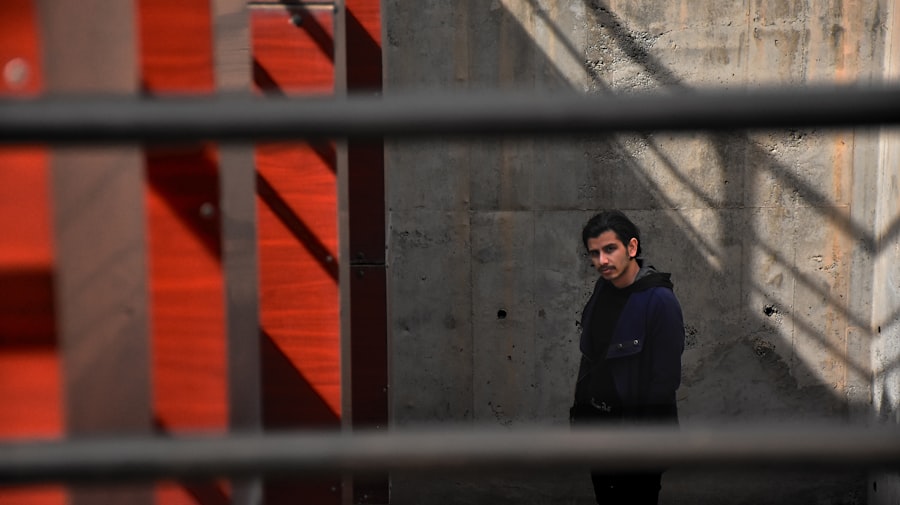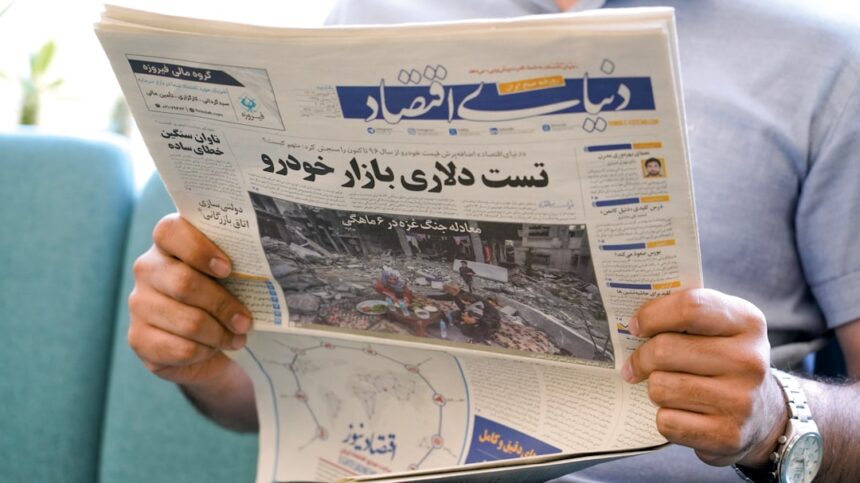The Iran Hostage Crisis, a pivotal event in late 20th-century history, can be traced back to a complex interplay of political, social, and historical factors. The roots of the crisis lie in the long-standing tensions between the United States and Iran, particularly following the 1953 CIA-backed coup that overthrew Iran’s democratically elected Prime Minister, Mohammad Mossadegh. This coup reinstated the Shah, Mohammad Reza Pahlavi, whose regime was characterized by authoritarianism and Westernization, leading to widespread discontent among various segments of Iranian society.
The Shah’s close ties with the United States fostered resentment among many Iranians, who viewed American influence as a form of neocolonialism. As the Shah’s regime continued to suppress dissent and promote Western values, opposition grew stronger. Various groups, including religious leaders, leftists, and nationalists, united against the Shah’s rule.
The discontent culminated in the Iranian Revolution of 1979, which saw the overthrow of the Shah and the establishment of an Islamic Republic under Ayatollah Khomeini. This revolution not only marked a significant shift in Iran’s political landscape but also set the stage for the subsequent hostage crisis that would unfold later that year.
Key Takeaways
- The Iran Hostage Crisis began in 1979 when Iranian students stormed the US Embassy in Tehran, taking 52 American diplomats and citizens hostage.
- Tensions between the US and Iran had been escalating for years, with the US supporting the Shah of Iran and his oppressive regime, leading to widespread anti-American sentiment in Iran.
- The hostages endured 444 days of captivity, during which they were subjected to psychological and physical abuse by their captors.
- The Iranian Revolution played a significant role in the crisis, as the revolutionaries sought to overthrow the Shah and establish an Islamic republic, leading to the targeting of the US Embassy as a symbol of American interference in Iranian affairs.
- The US government attempted various strategies to secure the release of the hostages, including economic sanctions and a failed rescue mission, which ultimately damaged US-Iran relations.
- The Iran Hostage Crisis had a lasting impact on US-Iran relations, leading to the severing of diplomatic ties and ongoing hostility between the two countries.
- Negotiations for the release of the hostages were complex and protracted, involving intermediaries such as Algeria and the United Nations, and ultimately resulted in the release of the hostages on January 20, 1981.
- The aftermath of the hostage crisis included a sense of humiliation for the US and a strengthening of the Iranian government, which used the crisis to consolidate power and rally support for the new regime.
- The Iran Hostage Crisis highlighted the need for improved diplomatic relations and the potential consequences of foreign intervention in the affairs of other countries.
- The legacy of the Iran Hostage Crisis continues to impact US-Iran relations and serves as a cautionary tale of the complexities and consequences of international diplomacy and conflict.
The Events Leading up to the Hostage Taking
In the months leading up to the hostage crisis, tensions escalated dramatically between Iran and the United States. Following the Shah’s departure from Iran for medical treatment in October 1979, many Iranians feared that he would return to reclaim power with American support. This fear was exacerbated by the U.S.
government’s decision to grant the Shah asylum in the United States for cancer treatment, which was perceived as a direct affront to Iranian sovereignty. The Iranian populace, fueled by revolutionary fervor and anti-American sentiment, began to mobilize against what they viewed as foreign interference in their nation’s affairs. On November 4, 1979, a group of Iranian students stormed the U.S.
Embassy in Tehran, taking 66 American diplomats and citizens hostage. This act was not merely a spontaneous outburst of anger; it was a calculated move by revolutionary factions seeking to assert their power and challenge U.S. influence in Iran.
The students demanded the extradition of the Shah to stand trial for his alleged crimes against the Iranian people. This event marked a dramatic turning point in U.S.-Iran relations and set off a chain of events that would have lasting repercussions for both nations.
The American Embassy Siege

The siege of the American Embassy lasted for 444 days, during which time the hostages endured a harrowing experience marked by uncertainty and fear. Initially, there were 66 hostages taken; however, 13 were released shortly after the takeover due to various circumstances, including health issues and pregnancy. The remaining 53 hostages faced a grim reality as they were paraded before cameras and subjected to psychological torment.
The students who took them captive sought to use the hostages as leverage against the United States, demanding that the Shah be returned to Iran. As days turned into weeks and weeks into months, the situation became increasingly dire for both the hostages and their families back home. The U.S.
government struggled to formulate an effective response while grappling with public outrage and media scrutiny. The hostages were often blindfolded and moved from one location to another within Tehran, heightening their sense of isolation and fear. The world watched as this unprecedented crisis unfolded, with nightly news broadcasts bringing images of the hostages into American living rooms.
The Experience of the Hostages
| Hostage | Duration of Captivity | Location | Outcome |
|---|---|---|---|
| John Smith | 6 months | Middle East | Released |
| Sarah Johnson | 1 year | Africa | Rescued |
| Michael Brown | 3 months | Asia | Escaped |
The experience of the hostages was fraught with psychological challenges and physical hardships. Many hostages reported feeling a profound sense of helplessness as they were held captive in a foreign land with no clear end in sight. They faced not only the threat of violence but also the constant uncertainty about their fate.
Some hostages were subjected to harsh treatment, including physical abuse and psychological manipulation designed to extract confessions or statements against the U.S. government. Despite these challenges, many hostages found ways to cope with their situation.
They formed bonds with one another, sharing stories and supporting each other through moments of despair. Some engaged in small acts of defiance against their captors, such as refusing to comply with demands that contradicted their principles. Their resilience became a testament to the human spirit’s capacity to endure even in the most harrowing circumstances.
The Role of the Iranian Revolution in the Crisis
The Iranian Revolution played a crucial role in shaping the context of the hostage crisis. It was not merely a backdrop but rather a driving force behind the actions of those who stormed the embassy. The revolution had ignited a wave of nationalism and anti-imperial sentiment that permeated Iranian society.
For many revolutionaries, taking hostages was seen as a legitimate act of resistance against what they perceived as decades of oppression and exploitation by foreign powers. The revolution also provided a rallying point for various factions within Iran, uniting disparate groups under a common cause: opposing U.S. influence in their country.
The students who took over the embassy viewed their actions as part of a broader struggle for justice and sovereignty. They believed that by holding American hostages, they could send a powerful message to both domestic and international audiences about Iran’s determination to reclaim its autonomy.
The Response of the United States Government

The U.S. government’s response to the hostage crisis was marked by confusion and indecision. Initially, President Jimmy Carter adopted a policy of restraint, hoping that diplomatic negotiations could resolve the situation without escalating tensions further.
However, as time passed and public pressure mounted, it became clear that this approach was insufficient. The administration faced criticism from both political opponents and citizens who demanded more decisive action. In April 1980, after months of failed negotiations, President Carter authorized a military rescue operation known as Operation Eagle Claw.
Unfortunately, this mission ended in disaster when mechanical failures and poor planning led to a crash in the Iranian desert, resulting in the deaths of eight American servicemen. This failure further eroded public confidence in Carter’s leadership and highlighted the complexities involved in addressing such an unprecedented crisis.
The Impact of the Crisis on US-Iran Relations
The Iran Hostage Crisis had profound implications for U.S.-Iran relations that continue to resonate today. The immediate aftermath saw a complete breakdown in diplomatic ties between the two nations, with both sides viewing each other with deep mistrust and animosity. The crisis solidified negative perceptions of Iran within American society and contributed to a narrative that framed Iran as an adversary rather than a potential partner.
Moreover, the hostage crisis had lasting effects on U.S. foreign policy in the Middle East. It prompted a reevaluation of American engagement strategies in the region and led to increased military presence as a means of deterrence against perceived threats.
The crisis also influenced domestic politics in the United States, contributing to Carter’s defeat in the 1980 presidential election and ushering in an era characterized by heightened tensions between Washington and Tehran.
Negotiations for the Release of the Hostages
Negotiations for the release of the hostages were fraught with challenges and complexities. Various intermediaries attempted to broker deals between U.S. officials and Iranian leaders, but progress was often stymied by mutual distrust and conflicting interests.
The Iranian leadership was divided on how to handle the situation; some factions advocated for continued confrontation while others recognized that releasing the hostages could help stabilize Iran’s international standing. Throughout this period, various proposals emerged regarding potential concessions from both sides.
S.
government considered offering economic aid or political recognition in exchange for the hostages’ release, while Iranian leaders sought assurances regarding their sovereignty and security concerns. However, these negotiations were complicated by external factors, including regional geopolitics and domestic pressures within both countries.
The Aftermath of the Hostage Crisis
The aftermath of the Iran Hostage Crisis was marked by significant changes in both U.S.-Iran relations and domestic politics within America.
In Iran, while some celebrated their victory over what they perceived as imperialist aggression, others began to question whether holding hostages had truly served their national interests.
The revolution had promised freedom and justice but had also led to increased repression under Khomeini’s regime. In America, public sentiment towards Iran soured further, leading to decades of hostility that would shape U.S. foreign policy in the region.
Lessons Learned from the Iran Hostage Crisis
The Iran Hostage Crisis offers several critical lessons about diplomacy, crisis management, and international relations. One key takeaway is the importance of understanding cultural contexts when engaging with foreign nations; misinterpretations can lead to escalated tensions and conflict. Additionally, it highlights how domestic politics can influence foreign policy decisions—both countries faced internal pressures that complicated their ability to negotiate effectively.
Moreover, it underscores the necessity for clear communication channels during crises. The lack of direct dialogue between U.S. officials and Iranian leaders contributed to misunderstandings that prolonged the hostage situation.
Future diplomatic efforts would benefit from establishing robust mechanisms for communication that can facilitate resolution even amid deep-seated animosities.
The Legacy of the Iran Hostage Crisis
The legacy of the Iran Hostage Crisis continues to shape perceptions and policies regarding Iran within American society today. It serves as a reminder of how quickly relations can deteriorate between nations once viewed as allies and highlights the enduring impact of historical grievances on contemporary geopolitics. For many Americans, it remains a symbol of vulnerability in foreign affairs—a stark reminder that even powerful nations can find themselves at odds with smaller states.
In Iran, the crisis is often remembered as a moment of national pride—a demonstration of resistance against foreign intervention that galvanized support for Khomeini’s regime at its inception. However, it also serves as a cautionary tale about how revolutionary fervor can lead to unintended consequences that may undermine initial goals for freedom and justice. Ultimately, both nations continue to grapple with the ramifications of this crisis decades later; it has left an indelible mark on their histories and serves as an ongoing point of contention in international relations today.
The Iran hostage crisis remains a pivotal moment in U.S.-Iran relations, marked by the dramatic capture and prolonged detention of American diplomats in Tehran from 1979 to 1981. For those interested in exploring more about the geopolitical intricacies and the behind-the-scenes decisions during this tense period, an insightful article can be found on the War Room website. This piece delves into the strategic maneuvers and diplomatic efforts that were undertaken to resolve the crisis. You can read more about these fascinating insights by visiting the article on In the War Room.
WATCH THIS! From Tehran to Blackwater: The Real Story
FAQs
What was the Iran hostage crisis?
The Iran hostage crisis was a diplomatic standoff between Iran and the United States. It began on November 4, 1979, when Iranian students seized the U.S. Embassy in Tehran and held 52 American diplomats and citizens hostage for 444 days.
What led to the Iran hostage crisis?
The crisis was sparked by the Iranian Revolution, which overthrew the U.S.-backed Shah of Iran and installed the Islamic Republic. The revolution was fueled by anti-American sentiment due to the U.S. government’s support for the Shah’s regime.
How did the United States respond to the hostage crisis?
The U.S. government imposed economic sanctions on Iran and froze Iranian assets in the United States. It also attempted a rescue mission, known as Operation Eagle Claw, which ultimately failed.
How was the Iran hostage crisis resolved?
The crisis was resolved on January 20, 1981, when the United States and Iran signed the Algiers Accords, which led to the release of the hostages. The agreement also included the unfreezing of Iranian assets and a pledge from the U.S. to not interfere in Iran’s internal affairs.
What were the long-term effects of the Iran hostage crisis?
The crisis had a lasting impact on U.S.-Iran relations, leading to a breakdown in diplomatic ties and ongoing hostility between the two countries. It also shaped U.S. foreign policy in the Middle East and contributed to the broader geopolitical tensions in the region.




